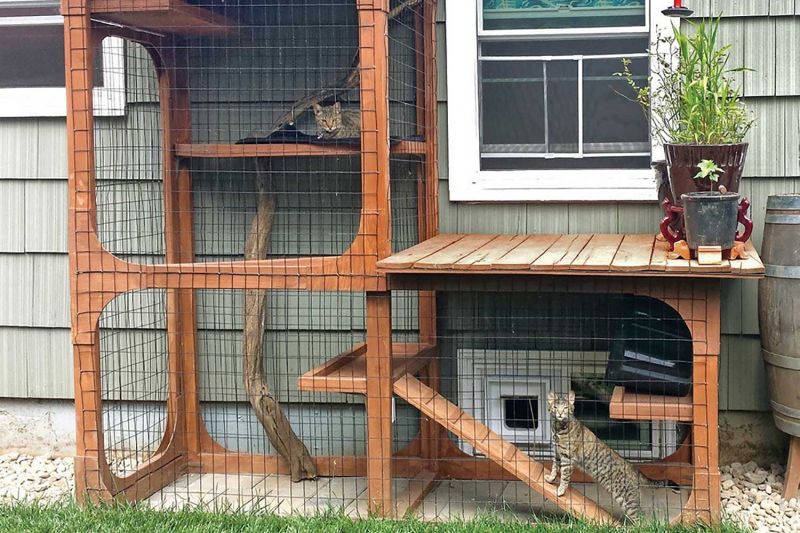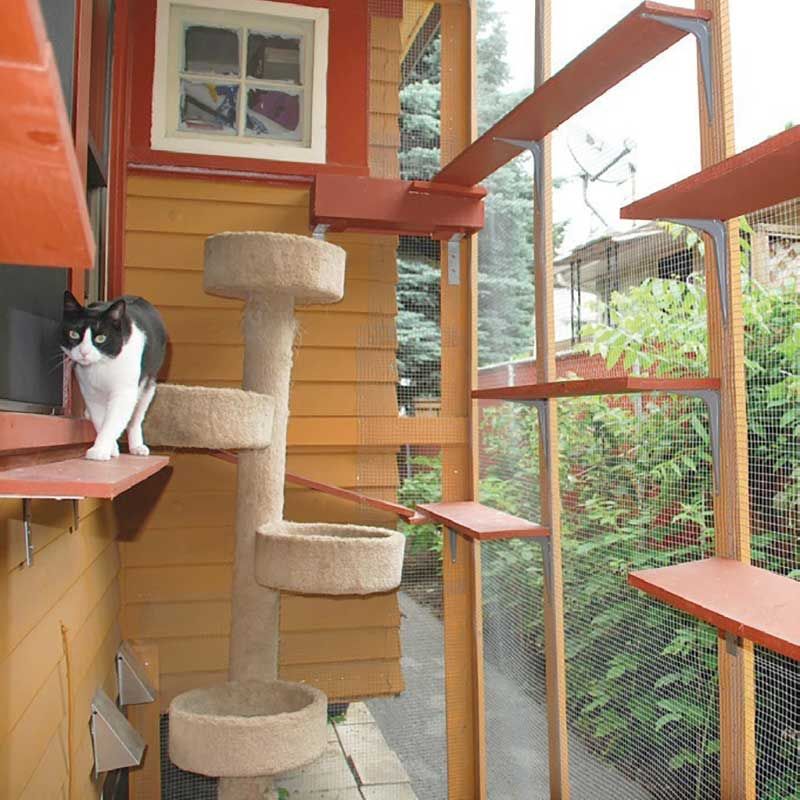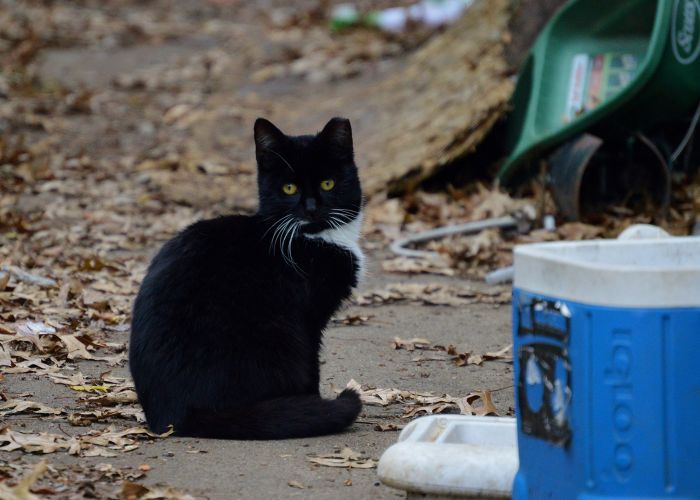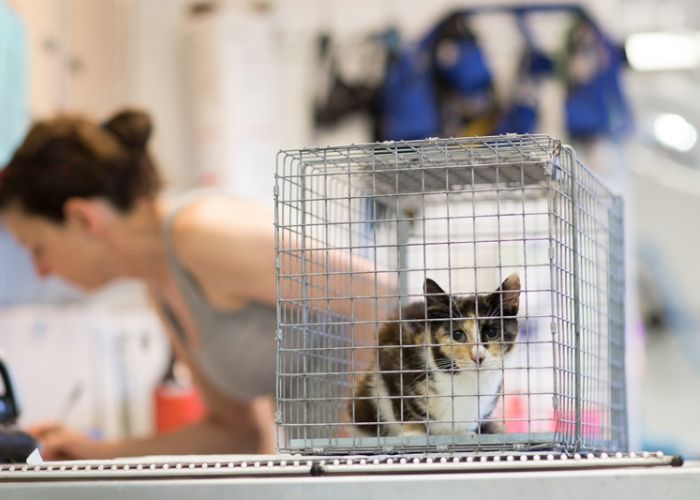Sharing spaces
A collaboration between cat and bird advocates demos spaces that keep both species safe

Media articles about the tensions between cat and bird advocates often feature dramatic headlines—“Fur and Feathers Are Flying!”—to highlight the ways in which the two groups of animal lovers butt heads.
While it’s true there are conflicts, there is also common ground. Rather than constantly obsessing over the issues that wildlife and cat advocates don’t agree on (like exactly how many birds may be killed annually by outdoor cats), some groups opt to focus on the large areas of agreement and seek to find compromise in reaching their common goals: to protect both cats and wildlife.
Since the mid-1990s, the Audubon Society of Portland and the Feral Cat Coalition of Oregon have recognized the importance of “looking for common ground in a landscape often marked by conflict,” says Bob Sallinger, conservation director for the Audubon chapter. Rather than taking potshots at each other, they have co-created a series of public service announcements, appear together in the media regularly, focus on the end goal of humanely reducing the outdoor cat population through trap-neuter-return and other strategies and engage the public on these issues using a variety of creative means. Their trademarked Cats Safe at Home campaign encompasses a variety of activities and information geared toward cat lovers and bird lovers alike.
While many bird advocates would love to see all cats kept indoors, many cat owners feel that their pets are bored indoors and long for the excitement and prowling that the great wide open allows. “Catios”—screened-in areas that allow cats to enjoy the outdoor experience safely, without leaving them free to roam—can provide an excellent compromise, and in 2013, the two groups collaborated on the first Catio Tour. Over four hours, participants drove to homes on a guide map to visit with owners, see the catio designs, ask questions about materials and costs and generally get a feel for the wide range of possibilities for building these enclosures. The groups created the tour in hopes that participants would decide to build one for their own cats.The inaugural self-guided tour showed off 12 catios in homes around the city of Portland, ranging from simple screened-in porches to elaborate, custom-designed enclosures, with the homeowners or designated hosts there to answer questions from attendees. The two sponsoring organizations provided volunteers for each site to help direct the tour participants, answer questions and generally keep things running smoothly. Attendees registered for a spot and gained access to a comprehensive guidebook detailing the sites and catio designs.

After initial advertising, the event caught on, and organizers had to cap attendance at 600 people. More than 74 percent of tour participants surveyed afterward said they were either likely or very likely to build a catio of their own. “We had a great time and learned the things we wanted to learn,” one attendee noted, also commending the event for being well-organized and staffed by knowledgeable people.
Encouraged by the success in 2013, the two organizations held a second event last September, with nine new catios on the tour. This time, they had to cap registration at 900 people for fear of clogging up the residential streets of Portland. (People who were turned away could still access the guidebook for inspiration.) In the wake of the event, both the Audubon chapter and the Feral Cat Coalition gained new supporters and benefited from media attention (including articles in four newspapers) that highlighted their collaborative efforts.
“There are a wide variety of things you can do to address the issue, and [there’s] no one-size-fits-all solution,” says Karen Kraus, executive director of the Feral Cat Coalition. “We have to get creative with practical and constructive activities.”
Catios provide animal lovers with a fun, creative project that allows them to make a difference for their own beloved pets and the birds and other wildlife who share their spaces. “I was so inspired by the different catios featured on the tour,” one attendee noted. “I think other cities should catch on and spread the word about creating safe and enriching environments for cats.”
We couldn’t agree more.







